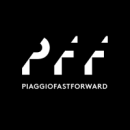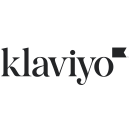For UX and UI designers in product development, providing a seamless and enjoyable experience for customers is always the goal. But this can be easier said than done.
Especially in today’s fast-moving consumer landscape, the constant introduction of new technologies, products and services makes it all too possible to keep augmenting and enhancing one’s own user experience.
And yet simplicity is often the best strategy when crafting a user’s journey through your product.
Brian Leach, principal product designer at Cohere Health, works with his team to constantly evaluate and evolve the user experience, implementing innovations that reduce the number of interactions users need to go through in order to utilize a given product.
“We learn as we go and as we grow,” said Leach. “We listen to feedback that comes in from our users, insights we pick up through research and data collected from analytics. We also aim to spend a good amount of time using the product ourselves to identify opportunities for improvement or simplification.”

Piaggio Fast Forward builds tech-enabled mobility solutions and robotics designed to help users move themselves and their cargo more freely.
When do you know it’s time to simplify your product’s user journey?
Simply put, it’s always time to simplify my product’s user journey. Simplicity is greatly underrated. As a designer, you can’t expect your users to spend time figuring out how to take a specific action on your product. All actions should come naturally, which is difficult to achieve. What comes naturally to me might make no sense to another person.
When I start designing and become very invested in a project, I spend countless hours looking at my work, rationalizing my decisions and thinking of every possible scenario. When I live and breathe my work, that’s exactly when I know it’s time to show someone else. Often, my team will ask questions I had never even thought about or point out an action that’s more complicated than it needs to be. Being invested in a project is great; but being invested in a project and sharing that with trusted coworkers for constructive feedback is even better.
What process do you use for identifying areas to simplify?
Effective communication is something I really value in my day-to-day work. Especially working remotely, it can be tough to get quality face time with coworkers and teammates. I like to schedule regular check-ins with my direct team and more sporadic check-ins with a larger stakeholder group to go through important projects. This allows all of us to be present and identify issues and answer questions. I also like to send email updates to all stakeholders with preview links to my work. That way, everyone can stay in the loop, knows exactly where we are in the process and knows what to expect at hand-off. It also means they can use their own time to go through designs and collect feedback.
I’m currently working on a web application. I designed 466 total screens, and through calls and emails, we have scrapped 223 so far. That’s 47.9 percent of the screens. I did the math! And we’re not even done with the design yet, which likely means that percentage will increase.
What are some common traps designers can fall into that result in an overly complicated user journey?
I fall into three traps regularly. One is falling in love with your work. After spending days and nights working on a project and being satisfied with where it is, it’s really hard to hear that someone else has a different direction and suggested edits. I constantly need to remind myself that constructive feedback is not only helpful but necessary for a successful end product. Be prepared to scrap half of your screens.
I also have learned not to believe that simplicity equals less work. This is just not true. A simple user journey often suggests a dedicated team spent time and energy looking through all possible options, then scrapping the most convoluted and complicated paths. It takes time to reach a simple and elegant solution to a problem, and your first attempt is likely not the winner.
Finally, I’d push back about the idea there’s no need to show your work. Sharing your work with others can be terrifying and vulnerable, but can prove incredibly rewarding. It’s fascinating to understand how people think in different ways, and how a coworker or client will shine a light on an issue you had not previously considered. Trust the people you work with, and embrace vulnerability.
Klaviyo is a customer data and marketing automation company that helps its customers improve their “owned marketing” by using tools like AI and machine learning algorithms to produce targeted emails and SMS marketing.
When do you know it’s time to simplify your product’s user journey?
I start with the customer and work backward. We’re currently working on improving our product feed, a feature for our customers to create campaigns by dragging and dropping product blocks to decide what product will populate. Klaviyo users want their customers to see their best-selling products, and the feed needs to be dynamic, because they’re changing all the time. However, our research revealed that only 10 percent of Klaviyo users were aware of this feature, so it was clear to us that we needed to make it easier to find. From there, I mapped out a user flow to understand how and when a Klaviyo user would complete the task of creating an email campaign. I found that there was a lot of back-and-forth navigation between multiple features to reach the product feed, making it convoluted and inconvenient for our customers to access.
What process do you use for identifying areas to simplify?
Continuing with the same example: I frame my proposed solutions by prioritizing the customer’s end goals. What are Klaviyo’s users trying to achieve? I realized that it’s less about creating a product feed and more about creating an effective campaign, as a feed offers just one way to populate a block. With that end goal in mind, I went back to the user flow I’d mapped out and moved it to the place where customers are actually using it, simplifying the feature and making it more discoverable.
What are some common traps designers can fall into that result in an overly complicated user journey?
The way product development works is that the product manager comes to the design team with requirements and asks us to mock up a concept. For many designers, myself included, it can be tempting to just start making a product based on these requirements without stopping to ask why. What is the user’s end goal? Not understanding this can result in a product that is overly complicated. With the product feed example: when I went back and explored the “why,” it immediately became clear where and how to simplify the user experience.
Cohere Health uses artificial intelligence and machine learning to accelerate the prior authorization process, allowing patients to more efficiently schedule the surgery and treatment they need.
When do you know it’s time to simplify your product’s user journey?
Moloney: Working in the healthcare space, we know that our users are interacting with a lot of different tools every day. There’s a lot of switching channels and duplicated work because systems aren’t talking to each other. We care a lot about building products that can reduce this friction, are easy to use, and have a positive impact.
What process do you use for identifying areas to simplify?
Moloney: While this may not sound as grand as rethinking the navigation of an entire complex workflow, a big factor in the experience of your product is the amount of information you’re asking someone to process. Every single attribute on a screen requires cognitive processing power, so it’s important to make sure that all the attributes are giving the user something in return for the processing power they require.
What are some common traps designers can fall into that result in an overly complicated user journey?
Leach: It’s very tempting to design bespoke “snowflake” interaction models for all the different things a user might need to do in your product. But if every interaction is different, it takes a long time for someone to learn how to use a product. This is where design systems become really important. When we’re dreaming up new interfaces, we often start with sketches and boundless possibilities — this keeps us in a creative, and innovative mindset. But when refining, we ask ourselves, “Are there any other components or interaction patterns we’ve already built that could help the user do this job?”
This question helps us think about what we ask our engineering team to spend their time building from scratch, and this in turn helps us build more efficiently. Perhaps even more importantly, it helps us make sure we’re not inadvertently creating more interactions for a user to learn than we have to. Familiar interaction patterns provide users with a familiar experience, even in an unfamiliar context.










